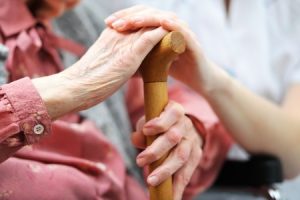 Architects, builders, and designers make a difference with every structure they draw and build. A tremendous amount of thought must go into every square inch to ensure, not only the appeal of new buildings, but their overall function.
Architects, builders, and designers make a difference with every structure they draw and build. A tremendous amount of thought must go into every square inch to ensure, not only the appeal of new buildings, but their overall function.
There are other sectors of the American (and international) public that requires even more thought to be given to any design. Creating a friendly design for the disabled can be some of the most rewarding and challenging in the field of architecture.
Nursing homes, senior living communities, and rehab centers are among the many spaces that need to cater to individuals with physical disabilities. While it isn’t without frustration, making something that will increase the quality of life for someone is noble and worthwhile goal.
The Problem Is Clear
Key Stats:
- 15.1% of adults in the U.S. have a physical functioning difficulty (over 36 million people).
- 75.4 million Americans had difficulty in at least one basic function in 2013 (a third of which are 65+).
- 7.1% of adults are unable (are find it very difficult) to walk a quarter mile.
While the numbers seem staggering, that should only prove the need for professionals to design from both their skill and conscience. All too often, buildings are crafted to meet the specific standards of regulation stemming from the ADA.
Many of these requirements are very helpful, but certain nuances and better solutions can be overlooked when being guided strictly by a “regulation” mindset. A little bit of thought from a well-versed architect will go a long way toward making the day in and day out routines of people with physical disabilities more enjoyable and independent.
A Couple of Ways to Help
The next time you’re looking at the regulations, go a step further and analyze two key factors:
The Mind of the Inhabitants: People don’t want to be labeled as disabled (even if they technically are), and they want to live as normal of a life as possible. Your designed spaces can change drastically to accommodate independence while still falling within local and federal guidelines.
The Needs of the Inhabitants: Thinking about the physical actions of a resident or patient with physical disabilities can open your eyes to the needs that wouldn’t normally be met. Things like hardware and functionality can be slightly altered for a major effect.
SOSS believes in designing with a conscience. We’ve helped supply the best quality door hardware on the market to many places that assist the community of individuals with physical disabilities. If your build is intended for those individuals, we encourage you to consider the SOSS UltraLatch. Our revolutionary door latch will help most with limited mobility open doors without assistance. For more information, be sure to look at our UltraLatch page.
